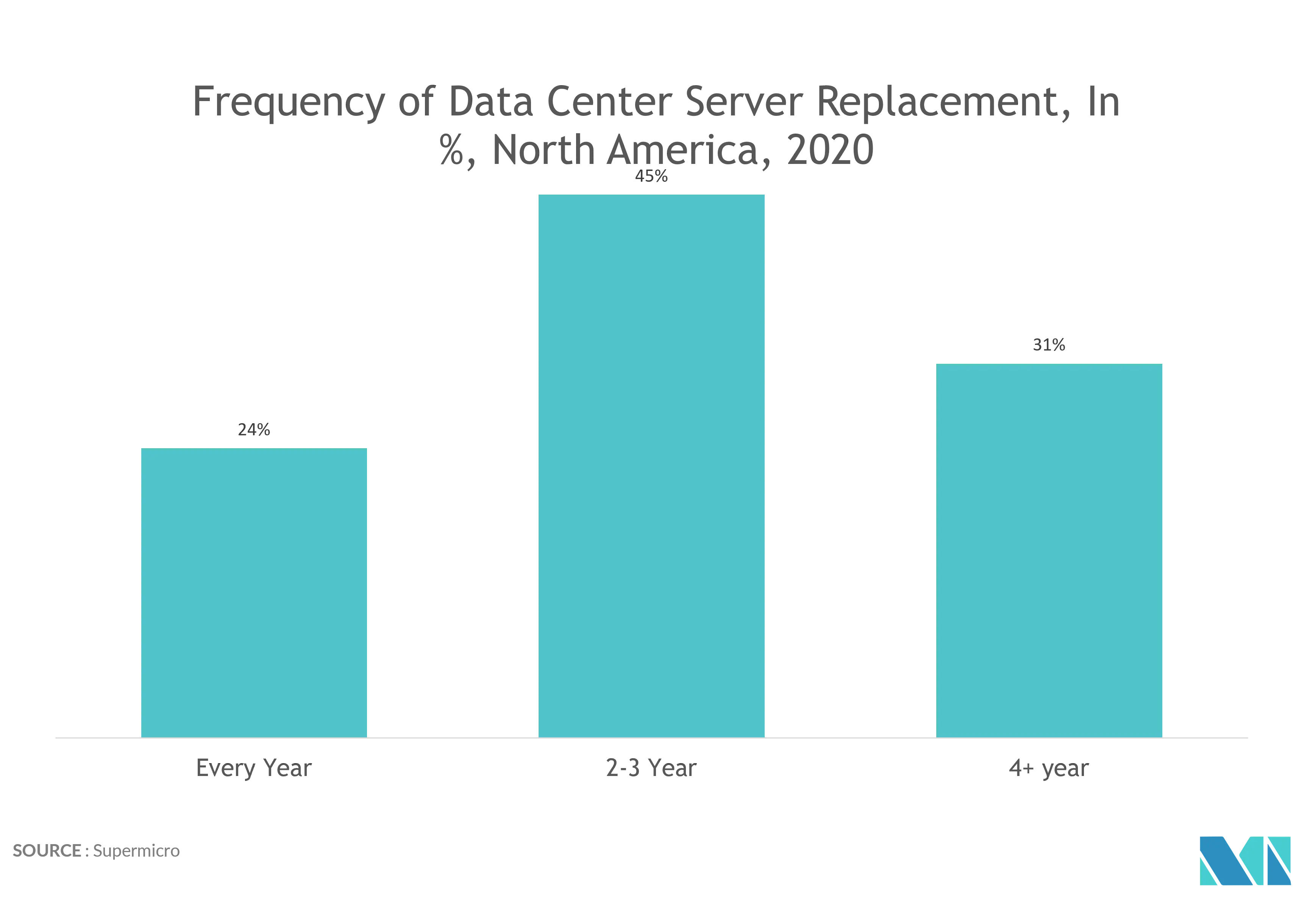Market Trends of NA SSD Caching Industry
This section covers the major market trends shaping the North America SSD Caching Market according to our research experts:
Enterprise Storage Expected to Hold Major Share
- Servers are typically configured with banks of hard disc drives (HDD) or connected to storage area networks (SANs), which are large banks of hard drives themselves. In the business storage network, improvements in server technology caused an I/O performance gap. SSD-based caching is used to close the I/O performance gap by lowering I/O latency and enhancing IOPS performance. Server-based caching does not necessitate storage array upgrades or the installation of any other appliances in the data path of important networks. SSD caching in servers effectively reduces the requirement for storage networks and arrays by servicing large percentages of the I/O demand of important servers at the network edge. This decrease in demand improves storage performance for other associated servers, potentially extending the storage infrastructure's useful life.
- SSD caching is used in a corporate environment to store previously requested data as it passes through the network, allowing it to be retrieved fast when needed. Placing previously requested material in temporary storage lessens the demand on an enterprise's bandwidth and speeds up access to the most up-to-date information. Enterprise SSDs either store data permanently or momentarily cache data in nonvolatile semiconductor memory. NAND flash memory is used in these SSDs, which provide better performance and use less power than spinning HDDs. SSD caching is becoming more important as the demand for computing speed rises across a variety of industries. As a result, a number of companies have entered the SSD cache market. This resulted in a decrease in the cost of SSD caches.
- Currently, data-center applications in a variety of businesses are processing an expanding volume of data sets. The page cache's caching impact is hampered by its low capacity. In comparison to hard discs and DRAM, emerging flash-based SSDs provide lower latency and lower costs. As a result, SSD-based caching is commonly used in data centers. According to the worldwide cloud index, data center traffic has seen an increase in data storage requirements. Because of its high-performance features, the high-traffic data center will increase demand for SSD caching. SSD caching allows data centers and cloud computing environments to host more users and complete more transactions per second by accelerating input/output operations per second (IOPs) and reducing latency.
- Many businesses in North America and Asia-Pacific have begun to provide SSDs that can be utilized as caching devices. Samsung commercial SSDs, for example, offers a wide range of enterprise data storage and caching choices for almost any application. Samsung can provide low-latency, high-speed, and dependable data storage solutions to boost server performance and efficiency by leveraging its deep OEM expertise in data center SSDs.
- North America is likely to be a major market as modern technologies such as cloud, IoT, Big Data, AI, and edge computing gain traction. The market in the region is rising due to the increasing need for storage as a result of the widespread usage of such technologies. This region became an important market due to the presence of a well-established infrastructure that allows for the faster application of sophisticated technology. To obtain a competitive advantage and increase corporate productivity, businesses in the region are boosting their IT infrastructure spending. As a result, SSD caching in IT infrastructure devices has become necessary to save time, speed up data transfer, and achieve high performance. In the region, traditional hard disc drives are being replaced at a rapid rate by SSDs.

Cloud Storage to Drive the market
- Cloud platforms enabled new, complex business models and have been orchestrating more global-based integration networks in recent years. The deployment of storage solutions over the cloud offers greater convenience, as the service vendor is solely responsible for providing maximum uptime, data security, and periodic updates, thus, decreasing the total cost of ownership.
- The need to reduce latency by moving data closer to the customer, as well as governmental and business regulations for data to be kept locally within different areas, are projected to drive growth in cloud storage in the United States. Enterprises in the region that are installing complex cloud infrastructures want systems that can store, retrieve, process, and analyze large amounts of business-critical data fast. As a result of this demand, many firms in the United States are switching from SATA-based SSDs to NVMe-based SSDs for primary storage. The latest NVMe SSDs include caching capabilities. The data center sector is rapidly expanding, with a greater emphasis on efficiency and maximum uptime. For example, IBM Corporation built four new cloud data centers in the country in response to increased demand for cognitive capabilities in the country.
- In addition, the cloud acts as a catalyst for IT transformation, providing the flexibility to combine the preferred clouds and existing on-premises infrastructure in the ratio best suited for the workload.
- Furthermore, the rising focus on cost optimization and business agility has led to the expansion of cloud data centers. Also, cloud services adapt easily to the changing landscape to meet new requirements. This allows the client organization to focus on their core competency, which, in turn, results in their overall growth.
- With the unstructured data expanding by more than 50% annually, managed service providers are looking at cloud storage as an upfront revenue opportunity. This was further augmented by the greater need for storage control. The foray of advanced technologies prompts companies to emphasize updating their storage system to match with the competition. Hybrid cloud is one such trend that provides a significant boost to market growth. However, security and the lack of network bandwidth for data transfer can challenge the growth of the market.


